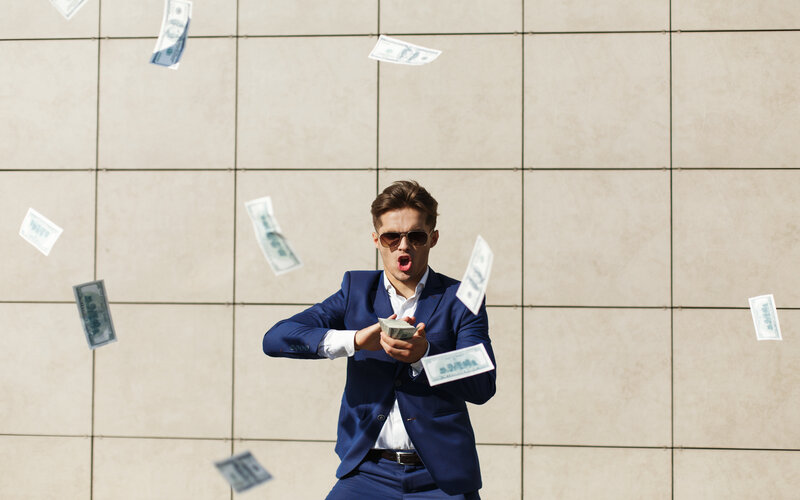Stamp duty is a hefty tax normally associated with the purchase or sale of a property or land, but it also applies to vehicles as well.
What is vehicle stamp duty?
Stamp duty is levied by state governments on the transfer of ownership of an asset. As well as property, it applies to both new and used cars, with a few exceptions.
Vehicle stamp duty is a one-off payment, applying to both new and used cars purchased from a dealer or through a private sale. Typically, if you’re purchasing from a dealership, the driveaway price is inclusive of stamp duty. If the vehicle is purchased privately, stamp duty must be paid through the respective state or territory transport office. The amount of stamp duty payable varies between state and territories.
How much does stamp duty cost?
The cost of stamp duty depends on a number of factors including:
-
The price of the car
-
The type of the car
-
Volume of emissions produced
-
What state or territory you’re buying in
Stamp duty is calculated differently in each state and territory. In some states, the process is quite straightforward while in others, it can be complicated.
New South Wales
In NSW, stamp duty is calculated on the price paid. For a new vehicle, it’s based on the vehicle’s full value. For a used vehicle, it’s calculated on its market value or the price you paid for it - whichever is higher. The duty payable is based on the following calculation:
|
Price paid: |
$44,999 or less |
$45,000 or more |
|
Duty payable: |
$3 for every $100 or part thereof |
$1350 plus $5 per $100 or part thereof |
There are some exemptions to vehicle stamp duty for new and used full battery electric vehicles and hydrogen fuel cell electric light vehicles under 4.5 tonnes gross (including motorcycles) with a dutiable value up to $78,000 registered for the first time on or after 1 September 2021. Here is a list of other exemptions.
To calculate how much stamp duty you would be required to pay in New South Wales, the state government provides a stamp duty calculator.
Victoria
In VIC, transfer and motor vehicle duty fees are a bit more complex. The rate is typically charged on either the market value of the car or the purchase price, whichever is greater. However, different rates apply depending on:
-
Whether the car you are buying is new or used
-
Whether it emits a certain amount of CO2 (with vehicles emitting less than 120g/km are classified as "green passenger cars")
-
Whether it is registered to a primary producer
-
Whether it is classified as a non-passenger vehicle which covers motorcycles, single- and dual-cab utes, commercial vans, and vehicles designed to carry more than eight people.
|
Type |
Category |
Value |
Rate |
|
Low emission (120 gm/km) passenger vehicle |
New, used registration or transfer of registration |
Any value |
$8.40 per $200 or part thereof |
|
Primary producer passenger car |
New, used registration or transfer of registration |
Any value |
$8.40 per $200 or part thereof |
|
Passenger vehicles |
New, used registration or transfer of registration |
Up to $76,951 |
$8.40 per $200 or part thereof |
|
Luxury passenger vehicles |
New, used registration or transfer of registration |
Over $76,951 up to $100,000 |
$10.40 per $200 of the market value or part thereof |
|
Upper luxury passenger vehicles |
New, used registration or transfer of registration |
Over $100,001 up to $150,000 |
$14.00 per $200 of the market value or part thereof |
|
Super luxury passenger vehicles |
New, used registration or transfer of registration |
More than $150,001 |
$18.00 per $200 of the market value or part thereof |
|
Non-passenger vehicles and motorcycles |
New registration |
Any value |
$5.40 per $200 or part thereof |
|
Non-passenger vehicles and motorcycles (including heavy trailers) |
Used or transfer of registration |
Any value |
$8.40 per $200 or part thereof |
|
Demonstrator passenger vehicles |
Second-hand registration or transfer of registration |
Any market value |
Applicable new car rate |
There is a list of exemptions for stamp duty, including modified vehicles for people with disabilities, vehicles used for primary production, and those that are part of a deceased estate. To calculate how much stamp duty you would be required to pay in Victoria, the state government provides a motor vehicle duty calculator.
Queensland
In QLD, stamp duty for light vehicles (those under 4.5 tonnes) is calculated based on the value of the vehicle and its engine type.
|
Type of vehicle |
Under $100,000 |
More than $100,000 |
|
Hybrid and electric vehicles |
$2 per $100 or part of $100 |
$4 per $100 or part of $100 |
|
1 to 4 cylinders, 2 rotors or steam powered |
$3 per $100 or part of $100 |
$5 per $100 or part of $100 |
|
5 to 6 cylinders, 3 rotors |
$3.50 per $100 or part of $100 |
$5.50 per $100 or part of $100 |
|
7 or more cylinders |
$4 per $100 or part of $100 |
$6 per $100 or part of $100 |
To calculate how much stamp duty you would be required to pay in Queensland, the state government provides a vehicle registration duty calculator.
There is also a long list of exemptions in Queensland, including if the vehicle is part of a divorce settlement, a gift from a relative, or will be used by a charity.
Western Australia
In WA, stamp duty is calculated on the purchase price and the weight of the vehicle.
Non-heavy vehicles (gross mass of 4.5 tonnes or less) require:
|
Dutiable value |
Value rate |
|---|---|
|
Up to $25,000 |
2.75% of dutiable value |
|
$25,000 - $50,000 |
R% of the dutiable value, where R = [2.75 + ((dutiable value - 25,000)/ 6,666.66)] rounded to 2 decimal places |
|
Over $50,000 |
6.5% of dutiable value |
Heavy vehicles (over 4.5 tonnes) require:
-
3% of Dutiable Value (capped to a maximum of $12,000)
To calculate how much stamp duty you would be required to pay in Western Australia, the state government provides a vehicle stamp duty calculator. It also provides a full list of exemptions here.
South Australia
In SA, stamp duty is calculated on the purchase price or market value of the vehicle, whichever is higher, and whether the vehicle is classified commercial or non-commercial.
|
Price paid: |
Up to $1,000 |
$1,001 - $2,000 |
$2,001 - $3,000 |
More than $3,000 |
|
Duty payable: |
$1 for every $100 or part of $100, with a minimum of $5 |
$10, plus $2 per $100 or part of $100 |
$30, plus $3 per $100 or part of $100 |
$60, plus $4 per $100 or part of $100 |
To calculate how much stamp duty you would be required to pay in South Australia, the state government provides a stamp duty calculator available here. There is also a list of exemptions.
Tasmania
In TAS, stamp duty is calculated on the vehicle’s market value and the type of vehicle. Here is how the rate is calculated for passenger vehicles
|
Price paid: |
Up to $600 |
$600 - $35,000 |
$35,000 - $39,999 |
$40,000 and over |
|
Duty payable: |
$20 |
$3 per $100 or part thereof, of dutiable value |
$1,050 plus $11 per $100 or part thereof, that the dutiable value exceeds $35,000 |
$4 per $100 or part thereof, of dutiable value |
To calculate how much stamp duty you would be required to pay in Tasmania, the state government provides vehicle stamp duty calculator. Tasmania also has a list of stamp duty exemptions.
Australian Capital Territory
In the ACT, stamp duty is calculated on the type of vehicle, the higher of the purchase price or market value of the vehicle, and its green rating.
In 2022, the ACT launched its Zero Emissions Vehicle (ZEV) strategy, aiming to make ZEVs more affordable by scrapping stamp duty on used electric and hydrogen-powered vehicles purchased on or after 1 August 2022.
As of 1 July 2023, second-hand hybrid electric vehicles (HEVs) and plug-in hybrids (PHEVs) were also exempted from vehicle stamp duty as long as their tailpipe emissions were no more than 130 grams/kilometres of CO2 (A-rated).
Vehicles are classified according to the federal government’s Green Vehicle Guide into four classes - A to D - depending on their CO2 emissions in grams/kilometre (g/km), as follows:
-
A (environmental leading-edge models) 0-130 g/km C02
-
B (models with significantly above-average environmental performance 131-175 g/km CO2
-
C (models with average environmental performance) 176-220 g/km CO2
-
D (models with below average environmental performance) 221 g/km CO2 and above
Below is the updated duty payable schedule for vehicles purchased on or after 1 July 2023
|
Vehicle class |
Duty payable for vehicles valued under $45,000 |
Duty payable for vehicles valued at $45,000 or more |
|---|---|---|
|
A ZEV (new & used) Used eligible hybrid and PHEV |
nil |
nil |
|
B New non-ZEV motorcycle |
$1 for every $100, or part of $100, of dutiable value |
$450, plus $2 for every $100, or part of $100, of dutiable value in excess of $45,000 |
|
Non-rated vehicles (other than used ZEV, used eligible hybrid, or used eligible PHEV) |
$3 for every $100, or part of $100, of the dutiable value |
$1,350, plus $5 for every $100, or part of $100, of the dutiable value in excess of $45,000 |
|
C |
$3.05 for each $100, or part of $100, of the dutiable value |
$1,370.50, plus $5.11 for every $100, or part of $100, of the dutiable value in excess of $45,000 |
|
D |
$4.25 for each $100, or part of $100, of the dutiable value |
$1,910.60, plus $6.82 for every $100, or part of $100, of the dutiable value in excess of $45,000 |
The ACT government provides a full guide on its latest motor vehicle duty regulations and outlines permitted exemptions on its Motor Vehicle Registration Revenue Circular. To calculate how much stamp duty you would be required to pay, the government also provides a stamp duty calculator.
Northern Territory
In the NT, stamp duty is calculated at a rate of 3% of the sale price or the market value of the vehicle. The NT government applies an 'arm’s length' test to decide whether stamp duty applies to the vehicle’s sale price or market value.
-
Arm’s length: vehicle purchases where neither party has a mutual interest, e.g. a dealer and a member of the public. Stamp duty is calculated on purchase price.
-
Non-arm’s length: transactions where both parties share an interest, e.g. purchasing from someone you know. Stamp duty is calculated on market value.
The government outlines its list of stamp duty exemptions as part of its Application for Exemption form. To calculate how much stamp duty you would be required to pay in the NT, the Territory has a stamp duty calculator available here.
Can you avoid paying stamp duty?
The exemptions from stamp duty also vary across the states and territories. In some cases, you will not be required to pay stamp duty if:
-
The vehicle is from a deceased estate
-
The vehicle has been registered in your name in another state where you have already paid the stamp duty
-
The vehicle is used for primary production or charities
-
The vehicle make is electric or hybrid
Exemptions vary considerably between the states and territories so make sure you check your eligibility.
Savings.com.au’s two cents
Stamp duty can be an expensive fee on top of the purchase price of a car, regardless of whether it’s new or used. It’s important you factor this expense into your car-buying budget. As a rule of thumb, the more expensive the car is to purchase, the more you will fork out in stamp duty charges. Exemptions and duty reductions vary between the Australian states and territories, so it’s important to do your research first to determine if you may be eligible.
The automotive industry makes regular calls for states and territories to standardise motor vehicle stamp duties across Australia. The industry argues the different calculation methods make it difficult for car companies to offer national driveaway deals. It says it’s “ridiculous” stamp duty charges can vary so widely depending on where you live, especially at the more expensive end of the market.
Bear in mind, stamp duty is not the only additional cost you might be up for when buying a car. You also need to take into account:
-
vehicle registration
-
luxury car tax (LCT), if applicable
-
vehicle inspection fee
Article first published June 2019 by William Jolly & updated 21 June 2024 by Denise Raward.
Advertisement
In the market for a new car? The table below features car loans with some of the lowest interest rates on the market.
| Lender | Car Loan | Interest Rate | Comparison Rate* | Monthly Repayment | Interest Type | Vehicle Type | Maximum Vehicle Age | Ongoing Fee | Upfront Fee | Total Repayment | Early Repayment | Instant Approval | Online Application | Tags | Row Tags | Features | Link | Compare | Promoted Product | Disclosure |
|---|---|---|---|---|---|---|---|---|---|---|---|---|---|---|---|---|---|---|---|---|
5.99% p.a. | 7.12% p.a. | $580 | Variable | New | No Max | $8 | $400 | $34,791 |
| Promoted | Disclosure | |||||||||
6.52% p.a. | 6.95% p.a. | $587 | Fixed | New, Used | No Max | $0 | $350 | $35,236 |
| Promoted | Disclosure | |||||||||
6.57% p.a. | 7.19% p.a. | $588 | Fixed | New | No Max | $0 | $250 | $35,278 |
| Promoted | Disclosure |
Image by Beka Tasmagambet via Unsplash






 Denise Raward
Denise Raward
 Harry O'Sullivan
Harry O'Sullivan

 Alex Brewster
Alex Brewster


